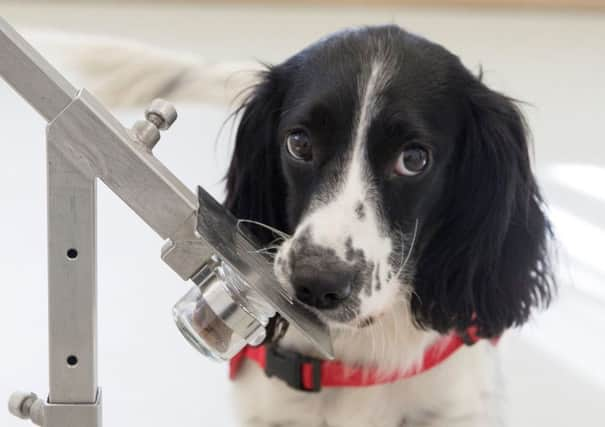Sniffer dogs able to detect malaria from people's socks


Researchers said their findings could potentially lead to the first rapid and non-invasive test for malaria.
Although the research is in its early stages, scientists hope trained sniffer dogs could help to stop malaria spreading between countries and lead to infected people being identified earlier and treated more quickly.
Advertisement
Hide AdAdvertisement
Hide AdPrincipal investigator, Professor Steve Lindsay of the Department of Biosciences at Durham University, said: “While our findings are at an early stage, in principle we have shown that dogs could be trained to detect malaria infected people by their odour with a credible degree of accuracy.
“This could provide a non-invasive way of screening for the disease at ports of entry in a similar way to how sniffer dogs are routinely used to detect fruit and vegetables or drugs at airports.
“This could help prevent the spread of malaria to countries that have been declared malaria-free and also ensure that people, many of whom might be unaware they are infected with the malaria parasite, receive antimalarial drug treatment.”
Nearly half of the world’s population is at risk of malaria, according to the World Health Organisation (WHO).
In 2016, there were an estimated 216 million cases of malaria worldwide – an increase of five million cases over the previous year – and an estimated 445,000 malaria deaths. Around 90 per cent of cases are in sub-Saharan Africa.
The disease is caused by parasites transmitted to people through the bites of infected female Anopheles mosquitoes, but can be prevented and cured with antimalarial drugs.
The study saw researchers from the Medical Research Council Unit The Gambia at the London School of Hygiene and Tropical Medicine use nylon socks to collect foot odour samples from apparently healthy children aged five to 14 in the Upper River Region of Gambia in West Africa.
Using a simple finger-prick test, the children were also screened to determine whether they had the malaria parasite Plasmodium falciparum in their blood. The sock samples were transported to the Medical Detection Dogs charity in Milton Keynes.
Advertisement
Hide AdAdvertisement
Hide AdHere, two dogs, a Labrador-Golden Retriever cross called Lexi and a Labrador called Sally, have been trained to distinguish between the scent of children infected with malaria parasites and those who were uninfected.
In total, 175 sock samples were tested including those of all 30 malaria-positive children identified by the study and 145 from uninfected children.
The dogs were able to correctly identify 70 per cent of the malaria-infected samples. The dogs were also able to correctly identify 90 per cent of the samples without malaria parasites.
The team said sniffer dogs could provide a non-invasive, portable and rapid test for identifying malaria carriers.